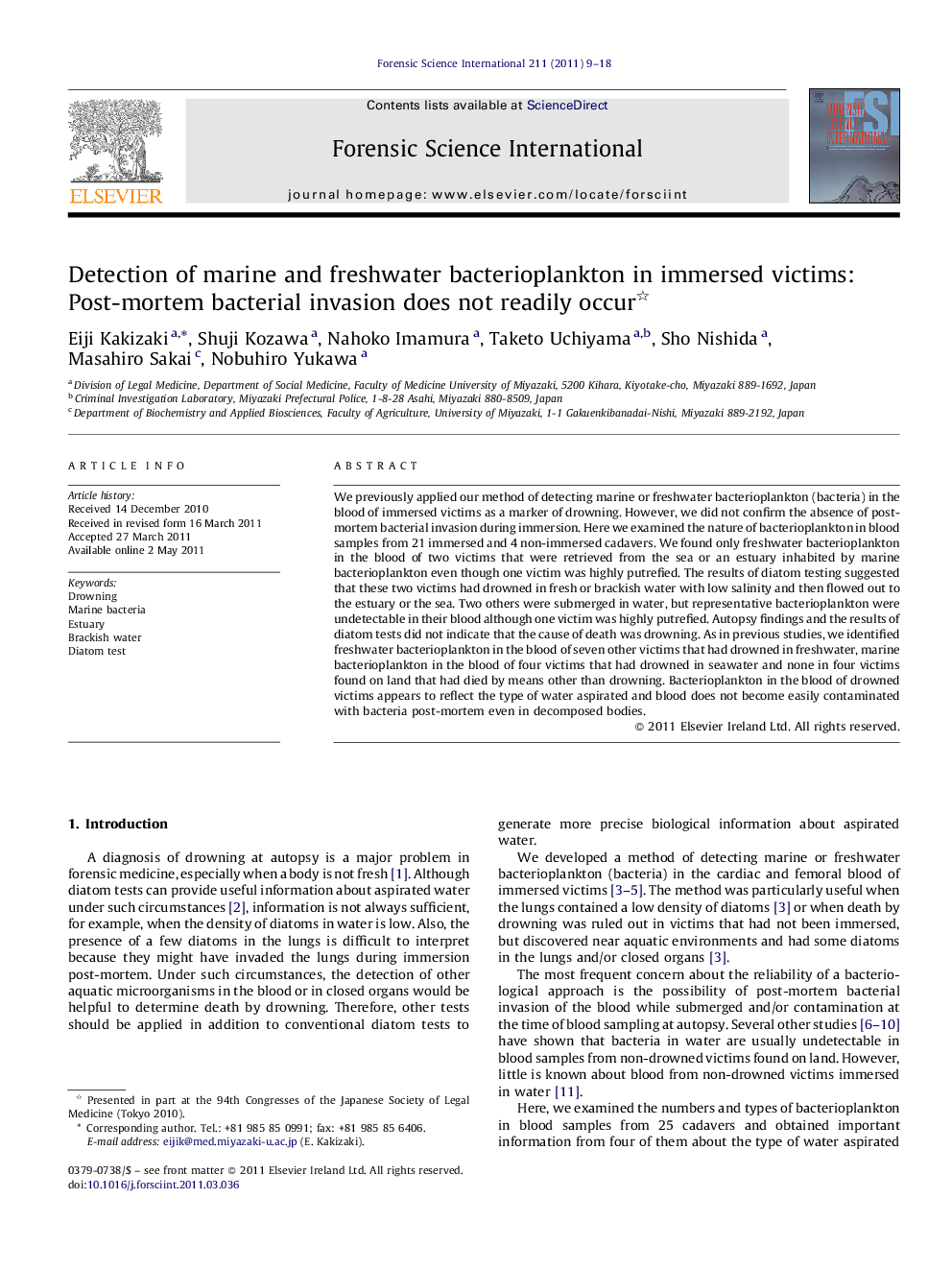| Article ID | Journal | Published Year | Pages | File Type |
|---|---|---|---|---|
| 96591 | Forensic Science International | 2011 | 10 Pages |
We previously applied our method of detecting marine or freshwater bacterioplankton (bacteria) in the blood of immersed victims as a marker of drowning. However, we did not confirm the absence of post-mortem bacterial invasion during immersion. Here we examined the nature of bacterioplankton in blood samples from 21 immersed and 4 non-immersed cadavers. We found only freshwater bacterioplankton in the blood of two victims that were retrieved from the sea or an estuary inhabited by marine bacterioplankton even though one victim was highly putrefied. The results of diatom testing suggested that these two victims had drowned in fresh or brackish water with low salinity and then flowed out to the estuary or the sea. Two others were submerged in water, but representative bacterioplankton were undetectable in their blood although one victim was highly putrefied. Autopsy findings and the results of diatom tests did not indicate that the cause of death was drowning. As in previous studies, we identified freshwater bacterioplankton in the blood of seven other victims that had drowned in freshwater, marine bacterioplankton in the blood of four victims that had drowned in seawater and none in four victims found on land that had died by means other than drowning. Bacterioplankton in the blood of drowned victims appears to reflect the type of water aspirated and blood does not become easily contaminated with bacteria post-mortem even in decomposed bodies.
